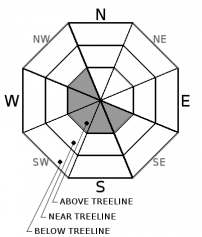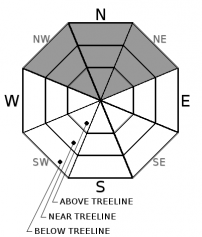| Sunday | Sunday Night | Monday | |
|---|---|---|---|
| Weather: | Sunny | Clear | Sunny becoming partly cloudy in the afternoon |
| Temperatures: | 25 to 30 deg. F. | 12 to 20 deg. F. | 36 to 41 deg. F. |
| Mid Slope Winds: | Variable | Variable | Variable |
| Wind Speed: | Light with some gusts up to 25 mph in the afternoon | Light | Light |
| Expected snowfall: | 0 | 0 | 0 |
| Sunday | Sunday Night | Monday | |
|---|---|---|---|
| Weather: | Sunny | Clear | Sunny becoming partly cloudy in the afternoon |
| Temperatures: | 25 to 30 deg. F. | 19 to 25 deg. F. | 34 to 39 deg. F. |
| Ridge Top Winds: | East | East | Variable |
| Wind Speed: | 15 to 25 mph with gusts to 35 mph increasing to gusts to 45 mph in the afternoon | 10 to 15 mph with gusts to 35 mph | Light with gusts up to 25 mph |
| Expected snowfall: | 0 | 0 | 0 |



























